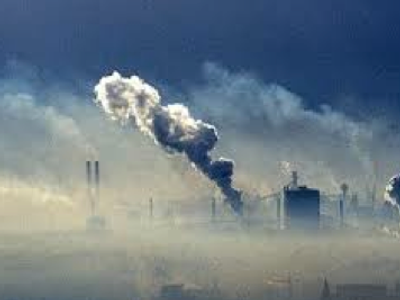Kyoto Protocol
The Kyoto Protocol is an international agreement linked to the United Nations Framework Convention on Climate Change (UNFCCC), which commits its Parties by setting internationally binding emission reduction targets.
Recognizing that developed countries are principally responsible for the current high levels of GHG emissions in the atmosphere as a result of more than 150 years of industrial activity, the Protocol places a heavier burden on developed nations under the principle of "common but differentiated responsibilities."
The Kyoto Protocol was adopted in Kyoto, Japan, on 11 December 1997 and entered into force on 16 February 2005. The detailed rules for the implementation of the Protocol were adopted at COP 7 in Marrakesh, Morocco, in 2001, and are referred to as the "Marrakesh Accords." Its first commitment period started in 2008 and ended in 2012.
The Kyoto Protocol to the United Nations Framework Convention on Climate Change (UNFCCC) is an international treaty that sets binding obligations on industrialised countries to reduce emissions ofgreenhouse gases. The UNFCCC is an environmental treaty with the goal of preventing "dangerous" anthropogenic (i.e., human-induced) interference of the climate system. There are 192 parties to the convention, including 191 states (all UN members, except Andorra, Canada, South Sudan and the United States) and the European Union. The United States signed but did not ratify the Protocol and Canada withdrew from it in 2011.The Protocol was adopted by Parties to the UNFCCC in 1997, and entered into force in 2005.
As part of the Kyoto Protocol, many developed countries have agreed to legally binding limitations/reductions in their emissions of greenhouse gases in two commitments periods. The first commitment period applies to emissions between 2008-2012, and the second commitment period applies to emissions between 2013-2020. The protocol was amended in 2012 to accommodate the second commitment period, but this amendment has (as of January 2013) not entered into legal force.
The 37 countries with binding targets in the second commitment period are Australia, all members of the European Union, Belarus, Croatia, Iceland, Kazakhstan, Norway, Switzerland, and Ukraine. Belarus, Kazakhstan and Ukraine have stated that they may withdraw from the Protocol or not put into legal force the Amendment with second round targets. Japan, New Zealand, and Russia have participated in Kyoto's first-round but have not taken on new targets in the second commitment period. Other developed countries without second-round targets are Canada (which withdrew from the Kyoto Protocol in 2012) and the United States (which has not ratified the Protocol).
International emissions trading allows developed countries to trade their commitments under the Kyoto Protocol.They can trade emissions quotas among themselves, and can also receive credit for financing emissions reductions in developing countries. Developed countries may use emissions trading until late 2014 or 2015 to meet their first-round targets.
Developing countries do not have binding targets under the Kyoto Protocol, but are still committed under the treaty to reduce their emissions.Actions taken by developed and developing countries to reduce emissions include support for renewable energy, improving energy efficiency, and reducingdeforestation. Under the Protocol, emissions of developing countries are allowed to grow in accordance with their development needs.
The treaty recognizes that developed countries have contributed the most to the anthropogenic build-up ofcarbon dioxide in the atmosphere (around 77% of emissions between 1750 and 2004), and that carbon dioxide emissions per person in developing countries (2.9 tonnes in 2010 are, on average, lower than emissions per person in developed countries (10.4 tonnes in 2010).
A number of developed countries have commented that the Kyoto targets only apply to a small share of annual global emissions. Countries with second-round Kyoto targets made up 13.4% of annual global anthropogenic greenhouse gas emissions in 2010. Many developing countries have emphasized the need for developed countries to have strong, binding emissions targets.At the global scale, existing policies appear to be too weak to prevent global warming exceeding 2 or 1.5 degrees Celsius, relative to the pre-industrial level.





